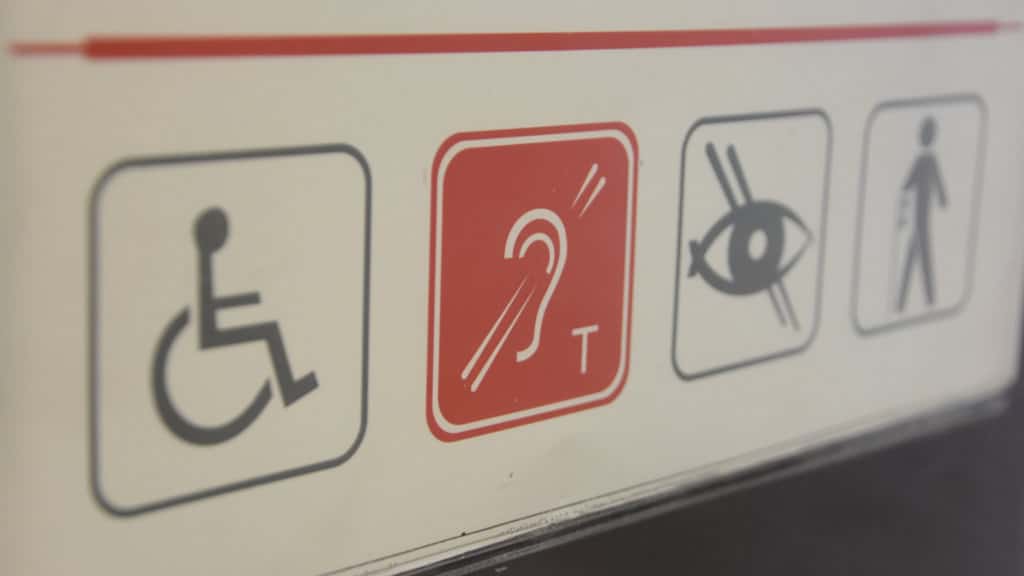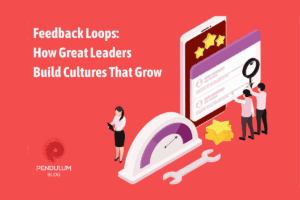In today’s society, diversity and inclusion are vital pillars for fostering a thriving and harmonious community. Embracing the unique perspectives and abilities of individuals from all walks of life enriches our collective experiences and propels us towards a more compassionate and understanding world. In this article, we shine a light on an often overlooked aspect of diversity: disability pride. By acknowledging and celebrating the strengths and contributions of individuals with disabilities, we can build a society that truly values inclusivity and equal opportunities for all.

“If we cannot now end our differences, at least we can help make the world safe for diversity.”
– John F. Kennedy
Embracing the Spectrum of Abilities
Disability pride encourages us to recognise that disability is not a deficit or a limitation but an inherent part of human diversity. Just as we celebrate cultural, ethnic and gender differences, we must extend the same appreciation to the wide-ranging spectrum of abilities. Every person, regardless of their physical or cognitive differences, has unique talents, skills and perspectives to offer. When we shift our focus from what individuals cannot do to what they excel at, we open up a world of untapped potential.
By promoting disability pride, we challenge these barriers head-on, promoting inclusive policies and fostering a culture of acceptance and understanding.

Breaking Down Barriers
One of the primary goals of disability pride is to break down the barriers that hinder the full participation of individuals with disabilities in society. These barriers can be physical, such as inaccessible buildings or transportation, or attitudinal, arising from stereotypes and prejudices. By promoting disability pride, we challenge these barriers head-on, promoting inclusive policies and fostering a culture of acceptance and understanding. Through education and awareness, we can transform misconceptions into appreciation and replace exclusion with equal opportunities.
Changing Perspectives
Disability pride encourages us to shift our perspective from a deficit-based approach to an asset-based one. Instead of focusing solely on the challenges faced by individuals with disabilities, we recognise their unique strengths, talents and resilience. By showcasing the accomplishments and contributions of disabled individuals across various fields, we challenge the narrow narratives often associated with disability. This shift in perception not only benefits the individuals themselves but also inspires others to overcome their own obstacles and embrace their capabilities.
Creating an Inclusive Society
Inclusion is the cornerstone of a diverse and vibrant society. By celebrating disability pride, we foster an environment where everyone feels valued and empowered. Accessibility becomes a priority, not just in physical spaces but also in education, employment, technology and social activities. When we actively seek to include individuals with disabilities, we tap into a wealth of creativity, innovation and diverse perspectives that can drive positive change in our communities.
Promoting Empathy and Understanding
Disability pride plays a vital role in promoting empathy and understanding among all members of society. By encouraging dialogue and fostering interactions between individuals with and without disabilities, we bridge the gap between different experiences. When we listen to each other’s stories, challenges and triumphs, we build connections and dissolve misconceptions. This creates a more empathetic society that embraces and supports individuals with disabilities, allowing them to thrive and contribute to their fullest potential.
Conclusion
Embracing disability pride is not only an essential step towards creating an inclusive society but also a celebration of the richness and diversity of the human experience. By valuing the abilities and perspectives of individuals with disabilities, we cultivate a society that uplifts and empowers everyone. Let us continue to work together, advocate for accessibility and equal opportunities, and build a world where disability pride shines brightly, transforming lives and communities for the better.
Want to read more? Browse our blogs below.

Tech-Driven Wellbeing: Balancing High Performance and Mental Health
In an always-on world where ambition is celebrated and busyness is worn like a badge of honour, there’s a rising undercurrent of fatigue, one that leaders can no longer afford to ignore. While striving for high performance, many professionals silently carry the weight of stress, burnout, and digital overload. According to Deloitte’s 2024 Global Human Capital Trends report, 64% of executives say they frequently feel depleted at work, and yet less than a third have taken meaningful steps to address it. The solution? It’s not about doing less..it’s about doing things differently. Welcome to the era of tech-driven wellbeing: where performance and mental health are no longer in opposition, but part of the same strategy. Why Tech-Enabled Resilience Matters In leadership today, emotional intelligence and mental fitness are as critical as strategy or execution, but developing these traits in isolation is no longer enough. We now have powerful tools, whether it is on our wrist, in our pocket, or on our desktops, that can amplify wellbeing through simple, science-backed nudges. Tech isn’t the enemy of wellbeing, when used mindfully, it’s one of our greatest allies. 1. Mindfulness: Reset in Real Time Gone are the days when meditation required a quiet room and 30 minutes of stillness. Well known tools like Headspace and Calm offer 1–5 minute breathing techniques, mental resets, and sleep prep content designed for real-world schedules. 🔸 Why it works: Short, consistent mindfulness breaks have been shown to reduce cortisol, improve cognitive flexibility, and enhance decision-making under pressure. 🔸 Try this: Lets say you have an important meeting that is causing some anxiety, why not try a 2-minute breathing exercise beforehand? You’ll get clearer focus and calmer conversation. 2. Wearables: Your Body’s Feedback Loop Smart devices have evolved far beyond step counters. Today, they offer real-time insight into how your body responds to stress, rest, and effort – an insight that can be a game-changer for leadership performance. Tracking things like heart rate variability (HRV), sleep quality, and resting heart rate can help you: Notice early signs of burnout Align demanding work with high-energy periods Make informed decisions about rest and recovery This isn’t about chasing perfect metrics, it’s about tuning in. The more you understand your body’s signals, the better you can manage your energy across the week, not just your time. 3. Micro-Breaks: Big Results from Small Shifts High performers often push through fatigue in the name of discipline. But science says it’s not sustainable. According to the Draugiem Group’s productivity study, the most productive people work in focused sprints of 52 minutes, followed by a 17-minute break. This rhythm supports cognitive endurance and reduces decision fatigue. 🔸 How to implement: Build movement into your natural routine.. Why not stand up during calls, walk between meetings, or do light stretches while reviewing notes? Set recurring “reset blocks” in your calendar. 5–10 minute windows between meetings will help in recharge. 4. Designing for Cognitive Recovery One of the most overlooked elements of high performance isn’t effort, it’s recovery. Not in the athletic sense, but in how we structure our digital environments to support mental clarity. Studies from the University of California Irvine found that frequent digital interruptions like emails and notifications can increase stress, reduce accuracy, and significantly extend task completion time. Instead of defaulting to constant availability, consider structuring your day around cognitive sprints and digital boundaries: Silence non-essential alerts during deep work blocks. Use natural transitions like walking to lunch or winding down after meetings as reset points. Reflect briefly after intense work sessions to re-centre attention and regulate stress. These small, intentional boundaries help the brain reset and recover, making it easier to return to high-focus states throughout the day. Final Thought: Tech Won’t Replace Grit—But It Will Support It Sustained performance isn’t about more hustle. It’s about designing your day—and your data—to support you. By blending self-awareness with smart tools, leaders can extend their energy, sharpen their edge, and most importantly, protect their mental health. The best of both worlds isn’t a myth. It’s a method. Looking Ahead to Pendulum 2026 If this year’s event is anything to go by, Pendulum Summit 2026 is set to raise the bar yet again. The early buzz suggests another powerhouse line-up and even more tailored leadership content. Tickets are already in demand, with early-bird packages available now for teams looking to secure their place at the world’s leading business and self-empowerment summit. Visit here for more information.

Navigating Hybrid Work: Real-Life Success Stories
The Future of Flexibility Is Now.. The world of work has changed, but the conversation is far from over. As more organisations solidify hybrid models, leaders face new questions: How do we balance autonomy with accountability? Culture with flexibility? Performance with presence? At Pendulum Summit, we’ve seen these questions tackled head-on by forward-thinking leaders and global experts. And one thing is clear: hybrid success isn’t about simply splitting time between home and office, it’s about redesigning how we work, lead, and connect. Hybrid Is Here, and Employees Want It That Way Morgan McKinley’s 2024 report revealed a striking truth: 92% of employees in Ireland now prefer a hybrid or fully remote setup. Only 8% favour a full-time office return, yet 42% of employers are pushing for it. That disconnect is creating tension—but also opportunity. The takeaway? Companies that listen, adapt, and evolve their hybrid approach will win the war for talent. Hybrid isn’t just a perk anymore. It’s an expectation. From Logistics to Leadership: What Real Hybrid Success Looks Like At Pendulum 2025, Christine Armstrong delivered practical wisdom on the mindset and infrastructure needed to thrive in hybrid environments. The top takeaways from their keynotes? : Build trust through clarity, not control Replace presenteeism with purpose-driven outcomes Prioritise communication rituals that bring people together, not just online 🎥 Check out this short clip from Pendulum Summit 2025 of Christine Armstrong on the Push-Pull of Office Culture Rethinking Communication: Why Fewer Meetings Can Mean More Progress One of the biggest challenges in hybrid work? Constant meetings. Back-to-back Zoom calls leave little room for deep thinking and focused work. That’s why more high-performing teams are embracing non-simultaneous communication. This refers to tools and practices that let people respond on their own time instead of always being “on” in real-time. Think: Shared project boards that track progress Recorded updates instead of live check-ins Written feedback instead of endless video calls This kind of flexibility lets team members work when they’re most productive, while still staying aligned. The key is clarity..clear expectations, timelines, and goals. It’s not about cutting connections, it’s about creating space for focus and flow. Hybrid Is a Leadership Test Stanford research shows that hybrid workers (2 days remote, 3 days in-office) are just as productive and less likely to quit than their fully in-office counterparts. But the deciding factor isn’t the model, it’s the manager. Leaders who succeed in hybrid environments: Create psychological safety regardless of location Champion flexibility without sacrificing accountability Recognise and reward output, not just availability These aren’t soft skills. They’re survival skills for the new world of work. Final Thought: Hybrid Done Right Isn’t a Compromise—It’s a Competitive Edge The future of work isn’t about choosing between remote and in-person, it’s about finding what unlocks your team’s best performance. When designed with intention, a hybrid work model becomes more than just that, it becomes a culture of trust, autonomy, and growth. And that’s what every leader at every level should be striving for in 2025 and beyond. Looking Ahead to Pendulum 2026 If this year’s event is anything to go by, Pendulum Summit 2026 is set to raise the bar yet again. The early buzz suggests another powerhouse line-up and even more tailored leadership content. Tickets are already in demand, with early-bird packages available now for teams looking to secure their place at the world’s leading business and self-empowerment summit. Visit here for more information.

The Science of Networking: Making Meaningful Connections
🤝 It’s Not Just Who You Know… You’ve heard the phrase: “Your network is your net worth”, but let’s be honest: networking often feels forced, awkward, or overly transactional. Business cards get exchanged, LinkedIn connections made, but the conversation ends there. What if we told you that real networking, the kind that shapes careers, sparks ideas, and supports wellbeing is actually backed by science? This edition of the Pendulum Newsletter breaks down what research tells us about meaningful human connection, and how to build a network that’s truly worth having. 1. Your Brain Is Built for Bonding We are hardwired to connect. Social interaction isn’t just a nice-to-have, it’s essential for cognitive function, emotional health, and long-term success. Research from the International Journal of Clinical and Health Psychology found that positive social connection activates the same brain reward centres as money and food. Meanwhile, social isolation has a comparable health risk to smoking 15 cigarettes a day. In work environments, the data is even more compelling: Gallup found that employees with a “best friend” at work are 7x more likely to be engaged. Teams with strong internal networks show higher resilience, creativity, and retention Connection isn’t a “soft skill”, it’s a survival skill – and a performance one, too. 2. Weak Ties, Strong Outcomes It’s easy to believe that close connections matter most. But it’s actually your looser ties, acquaintances, former colleagues, even one-off conversations that can have the biggest impact on opportunity. In 2022, over 20 million LinkedIn interactions were analysed and found that people were 2-4x more likely to land new opportunities through weak ties than close ones. Why? Because: Weak ties offer fresh perspectives They connect us to new industries and geographies They help us escape echo chambers That five-minute conversation you have in a hallway or during a break? It might just change your trajectory. 3. Good Networking Is Listening, Not Selling We often feel pressure to “stand out” when meeting new people. But research shows that the most likeable, memorable individuals aren’t the ones who talk the most are the ones who ask thoughtful questions. A Harvard Business School study revealed that people who asked follow-up questions were seen as more competent, more empathetic and more trustworthy Try this: Instead of “What do you do?”, ask “What’s something you’re excited about right now?” It leads to a richer, more human interaction. 4. Relationships Are a Long Game In the age of instant everything, networking still takes time. Meaningful professional relationships aren’t built at once, they’re grown over time with small moments of presence, generosity, and follow-up. According to the Journal of Applied Psychology, people who consistently maintain professional relationships (even briefly) experience: Stronger career progression Greater psychological safety at work Higher long-term job satisfaction Networking isn’t an event. It’s a habit. 💬 Final Thought: Fewer Cards, More Conversations The best connections often start in unexpected places with a curious question, a shared insight, or a quiet act of kindness. So if networking feels daunting, remember: it’s not about being the loudest person in the room. It’s about being the most present. Ask well. Listen better. Follow up slowly. That’s where the magic happens. Looking Ahead to Pendulum 2026 If this year’s event is anything to go by, Pendulum Summit 2026 is set to raise the bar yet again. The early buzz suggests another powerhouse line-up and even more tailored leadership content. Tickets are already in demand, with early-bird packages available now for teams looking to secure their place at the world’s leading business and self-empowerment summit. Visit here for more information.

The Leadership Identity Crisis: How to Lead Without Losing Yourself
When the Role Becomes the Mask Leadership comes with titles, responsibilities, and expectations, but for many high performers, something else happens too, quietly, over time: They start to lose themselves. They become so focused on delivering results, meeting standards, and “being a leader” that their authentic self slowly gets edited out. The mask hardens, the pressure grows, and one day the role they play feels more familiar than the person they are. This isn’t just considered as ‘burnout’, it’s the erosion of their identity. And it’s one of the most unspoken crises in leadership today. But here’s the truth: you can’t lead others well if you’re disconnected from yourself. 1. The Identity Shift Is Real and Measurable Leadership roles change how people behave and how they see themselves. In one study published in the Journal of Applied Psychology, researchers found that individuals in high-status leadership roles often suppress their emotions and self-expression in order to fit perceived norms. Over time, this leads to emotional dissonance, decreased job satisfaction, and a weakened sense of identity. In simpler terms: when leaders feel like they can’t be themselves, they don’t just perform worse, they lose sight of who they are. This disconnection becomes especially dangerous in high-pressure environments, where performance is prioritised over presence. The more successful someone becomes, the more likely they are to wear the mask, and the harder it becomes to take it off. 2. When You’re Always “On,” You Forget Who You Are Off Many leaders describe feeling like they’re constantly performing. Managing perception, delivering confidence, staying strong for others, but very few are taught how to reconnect to themselves when the cameras are off, the meetings end, and the adrenaline fades. In a 2022 survey by Deloitte, 60% of senior executives said they felt they couldn’t be fully authentic at work, despite preaching authenticity to their teams. That disconnect isn’t just ironic. It’s costly. Without moments to reflect, restore, or recalibrate, leaders lose internal clarity. And when that happens, they become reactive instead of responsive – leading from pressure instead of purpose. 3. Real Leadership Starts With Real Self-Awareness You can’t lead others effectively if you haven’t checked in with yourself. High-impact leaders invest in self-awareness not as a luxury, but as a leadership tool. They journal. They seek coaching. They ask hard questions like: What’s actually driving my decisions right now? Am I leading from alignment or obligation? Who am I when I’m not producing? According to research from Tasha Eurich, organisational psychologist and author of Insight, leaders who demonstrate high internal self-awareness are better performers, make sounder decisions, and are more effective communicators. And yet, only 10–15% of people are truly self-aware. That gap isn’t inevitable. It’s addressable, with intention. 4. Leading Without the Mask Isn’t Weakness—It’s Strength There’s a myth that showing who you are makes you vulnerable in the wrong way. But the data and lived experience say otherwise. In a 2021 study in Harvard Business Review, employees who described their leaders as “genuine and self-aware” also reported higher trust, loyalty, and resilience during change. Authenticity doesn’t diminish authority. It enhances it. When leaders speak honestly about challenges, admit mistakes, and show up with humanity and not just performance, they unlock real followership. People don’t want perfect, they want real, and so do leaders themselves. 💬 Final Thought: You’re More Than the Role Leadership is a privilege. But it’s not your personality. The best leaders don’t sacrifice themselves to become someone they think the role requires. They bring their whole selves to the work and build cultures that allow others to do the same. So if the mask is feeling heavy… it’s time to check in. Reconnect with your values. Revisit what makes you feel most you. Because the more you lead from that place, the more sustainable, trusted, and fulfilled your leadership becomes.

Pendulum Rewind: Robin Sharma on Regret, Distraction, and the Power of Purposeful Leadership
🔁 Revisiting a Standout Moment from Pendulum 2018 At Pendulum Summit 2018, Robin Sharma stepped onto the stage not to impress, but to provoke reflection. He began not with a strategy or success story, but with a poem once taped to his family fridge: “Spring has passed, summer has gone, and winter is here. And the song I meant to sing remains unsung, for I have spent my days stringing and unstringing my instrument.” This was no ordinary opening. It was a warning: don’t spend your life preparing instead of living. The central message of his keynote, similar to many others who have shared their message from the Pendulum stage was that success without presence is empty, and leadership without purpose is noise. 1. The Age of Dramatic Distraction Sharma painted a vivid picture of the modern professional’s daily reality: “We are addicted to distraction. We are addicted to technology. We are addicted to applause.” He cautioned that even the most talented leaders and performers are being pulled into a vortex of shallow focus, checking inboxes, chasing likes, and mistaking busyness for effectiveness. “We are distracted every 11 minutes, and it takes us 20 minutes to refocus.” That claim is more than anecdotal. A UC Irvine study confirms that it takes over 23 minutes to fully regain focus after an interruption. Add to that the growing pressure to multitask, and it’s clear: we’re paying for distraction with depth. Robin didn’t just present this as a personal failing. He called it a systemic leadership issue. When executives can’t concentrate, they don’t just lose productivity, they lose clarity. And without clarity, purpose fades. “If you want to do your greatest work, you need solitude. You need stillness.” 2. Efficiency Is Not the Goal In a world that often celebrates hustle as virtue, Robin challenged the audience to reconsider what they were actually working toward. He warned against the seductive trap of being busy but aimless, asking: Are you filling your days, or fulfilling your purpose? “The job of a leader is not to be busy, it’s to be valuable,” he told the audience, setting the tone for what became a central theme of his talk: intention over motion. Referencing Peter Drucker, he reminded us that “there is nothing so useless as doing efficiently that which should not be done.” Too many professionals, he suggested, are executing at full tilt without ever asking whether their efforts are meaningful. “You can be world-class at being busy… and still not get a single important thing done.” That insight is echoed by the data. According to Gallup’s 2023 State of the Global Workplace, only 23% of employees feel engaged at work. The remaining majority are active but disconnected. Productive, but not purposeful. Robin’s call was clear: stop equating efficiency with effectiveness. Leadership isn’t about speed, it’s about steering. And without a clear direction, even your most productive days can lead nowhere. 3. Leadership as Humanity, Not Hierarchy As he shifted into the emotional core of his talk, Robin posed a striking question to the audience: “How many of you want to learn how to be a better human being?” What followed wasn’t a tactic. It was a philosophy. He spoke about leaders who lift others not with authority, but with attention. Leaders who prioritise emotional intelligence over ego. And who understand that their job is not to be the hero, but to build heroes. 🎥 Watch the clip: https://pendulumsummit.com/wp-content/uploads/2025/05/robin-sharma-newsletter-for-linkedin.mp4 This message is echoed in recent research: a 2021 study published in Harvard Business Review found that leaders who model vulnerability, coach rather than command, and seek feedback significantly outperform their peers in team engagement and resilience, especially in times of uncertainty. As Robin put it: “If you’re not building your people, you’re not leading. You’re following.” 💬 Final Thought: Tune the Instrument Robin Sharma’s Pendulum keynote didn’t offer hacks or hacksaws. It offered a moment to stop. To think. To question whether we’ve spent too long “stringing and unstringing the instrument” instead of playing the song our life was meant to sing. He reminded us that the currency of real leadership is not productivity, it’s purpose, clarity, and character. The leaders who change lives are the ones who return, again and again, to what truly matters. 🎟️ Want to reconnect with your own purpose and learn from the world’s most transformational speakers? Join us at Pendulum Summit 2026 for two days of mindset, mastery, and movement. Looking Ahead to Pendulum 2026 If this year’s event is anything to go by, Pendulum Summit 2026 is set to raise the bar yet again. The early buzz suggests another powerhouse line-up and even more tailored leadership content. Tickets are already in demand, with early-bird packages available now for teams looking to secure their place at the world’s leading business and self-empowerment summit. Visit here for more information.

Feedback Loops: How Great Leaders Build Cultures That Grow
Feedback Is Fuel, Only If You Know How to Use It In high-pressure environments, feedback often becomes a performance tool used to correct, evaluate, or drive urgency. But the best leaders see it differently. They use feedback not just to manage performance, but to build trust, develop self-awareness, and create cultures of growth. Reason being that high-performing teams aren’t built by telling people what they got wrong, they’re built by helping people understand how to get better. 1. Feedback Is a Relationship, Not a Transaction Many leaders treat feedback like a checklist item: give it, tick the box, move on. But truly effective feedback starts with context, care, and credibility. When people don’t trust the messenger, they won’t take the message on board. That’s why feedback culture begins long before a performance conversation. It starts with how safe people feel speaking up, asking questions, or admitting when they’re stuck. As one study from MIT Sloan Management Review found, teams with high feedback receptivity showed significantly better collaboration, innovation, and adaptability, especially in fast-changing environments. Furthermore, according to Google‘s Project Oxygen, one of the top behaviours of effective managers is the ability to coach and give timely, helpful feedback. It’s not just nice to have, it’s core to team performance. 2. Great Leaders Give Feedback That Feeds Forward While traditional feedback focuses on what went wrong, the most effective leaders focus on what’s next. They guide people toward growth by framing feedback around potential, not just performance. This “feed forward” approach makes feedback more actionable and future-oriented. This helps in turning it into a development tool, not a judgment. The Center for Creative Leadership (CCL) found that forward-focused feedback leads to higher engagement, stronger initiative, and greater problem-solving within teams. It keeps people moving forward rather than stuck in what already happened. The message is clear: feedback shouldn’t just revisit the past. It should unlock the future. 3. They Make Feedback Normal, Not Formal Waiting for quarterly reviews to share insight is like waiting until the end of the race to tell someone they were running the wrong way. In high-trust teams, feedback is part of the rhythm, not a big event. It’s frequent, fast, and embedded in everyday interactions. A comment after a meeting, a Teams message of encouragement, or even a two-minute conversation that shifts perspective. The key isn’t quantity, it’s quality. And consistency builds confidence. 4. They Model It Before They Expect It The most powerful feedback doesn’t come from the top down, it’s mutual. The best leaders ask for feedback as often as they give it. They show that growth isn’t just for junior staff, it’s for everyone. And in doing so, they send the message: this is a team that gets better together. According to Harvard Business Review, employees who see their leaders request and act on feedback are more likely to report stronger team cohesion, higher job satisfaction, and greater openness to change. Feedback becomes less about evaluation, and more about evolution. 💬 Final Thought Feedback isn’t just a skill. It’s a culture. And when it’s done well, it unlocks growth that no strategy or system can match. Because the teams that improve fastest are the ones that talk to each other honestly and often. Looking Ahead to Pendulum 2026 If this year’s event is anything to go by, Pendulum Summit 2026 is set to raise the bar yet again. The early buzz suggests another powerhouse line-up and even more tailored leadership content. Tickets are already in demand, with early-bird packages available now for teams looking to secure their place at the world’s leading business and self-empowerment summit. Visit here for more information.
